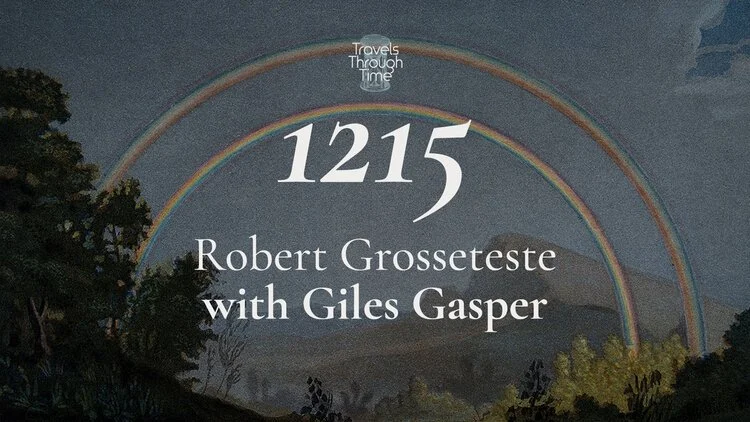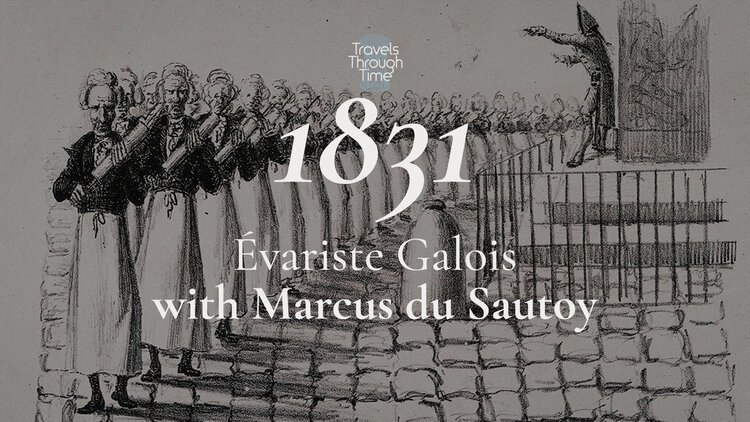The Astronomer and the Astrolabe: Seb Falk (1327)
Seb Falk with an astrolabe in the Whipple Museum of the History of Science, Cambridge (Credit: Jason Bye)
Geoffrey Chaucer has gone down in history as the ‘father of English literature’ and his Canterbury Tales are celebrated across the globe as the earliest work of fiction in that language. Less well known, but equally important, is his Treatise on the Astrolabe, the first technical manual written in English, in which he describes how to make and use these extraordinary instruments.
*** [About our format] ***
Astrolabes were calculating devices, the smartphones of their day, which enabled scholars to make accurate observations of the stars and planets, and to calculate a huge range. This book survives in many manuscripts – testament to the demand for information about them in the Medieval Period and the clarity with which Chaucer presented the information, as a kind of ‘astrolabes for dummies’, addressed to his young son.
In the decades before Chaucer’s ground-breaking text, English scholars like Richard of Wallingford and John of Westwyk used Latin manuscripts imported from the Continent to construct astrolabes. The instruments that survive today are generally made of metal, stunning examples of craftsmanship which are often intricately carved and very ornate, valued as much for their appearance as their utility. Everyday astrolabes, made of wood or even paper, which were used constantly and would have lain on scholars’ desks, have not come down to us but played a vital role in the development of scientific ideas in Medieval England.
In this period, scholars were almost always monks, their interest in astronomy and use of astrolabes were partially motivated by the need for accurate timekeeping and working out church dates like Easter. Seb Falk, our guide this week, reveals the wonders of scientific discovery in late medival England in his absorbing book, The Light Ages, A Medieval Journey of Discovery.
In this episode he takes us back to the early fourteenth century to a seminal year in the life of Richard of Wallingford, one of the best-known scholars of his day: a gifted astronomer, inventor, Abbot and ultimately, victim of leprosy. On our journey we will visit Oxford to witness university life – the development of curriculums, monks attending university and their rivalries with friars, student parties and riots.
We will follow Richard on his journey from St Albans to Avignon, stopping off in London at the Abbots of St Albans’ inn in the city, to hear the sounds and smell the smells of urban life and monks’ interactions with it, to see the royal court at Westminster, where Philippa of Hainault has recently arrived, on her way to get married to the young Edward III. Back in St Albans, we will watch as construction on Richard’s extraordinary astronomical clock begins.
*** Listen to the Podcast ***
Show Notes
Scene One: Summer 1327, Oxford University. Richard of Wallingford is just finishing up his time at Oxford and composing two of his most important scientific works.
Scene Two: Autumn 1327, St Albans to Avignon, via London. Richard has been elected abbot and is making his way to have his appointment confirmed by the pope in Avignon.
Scene Three: Winter 1327/Spring 1328, St Albans. Richard returns to St Albans and begins work on his marvellous astronomical clock.
Memento: The abbot’s Albion instrument, which he invented but which is long since lost. We know exactly how it worked because the instructions for it are one of those important works he wrote in 1326-7 at Oxford.
People/Social
Presenter: Violet Moller
Guest: Seb Falk
Production: Maria Nolan
Podcast partner: Unseen Histories
Follow us on Twitter: @tttpodcast_
Or on Facebook
See where 1327 fits on our Timeline
About Seb Falk
Seb Falk is a BBC/AHRC New Generation Thinker. He teaches medieval history and history of science at Cambridge University, where he is a Pro-Proctor and a Fellow of Girton College. His first book, The Light Ages (2020), is a wide-ranging history of medieval science, told through the life of an extraordinary monk, John of Westwyk. At each stage of John's adventurous life as a novice and exile, crusader and inventor, we learn what he learned, seeing that the Middle Ages were far more advanced than is often assumed.
Seb demonstrates how to use an astrolabe…
Listen on YouTube
Featured Images
Complementary Episodes
A Dazzling Mind and Magna Carta: Professor Giles Gasper (1215)
In this episode we explore the year 1215 in order to understand some of the most significant political, religious and intellectual developments of the medieval period.
The Magical Mathematician: Prof. Simon Schaffer (1684)
In this episode, Professor Simon Schaffer of the University of Cambridge takes us to three scenes in the year 1684, and to the genesis of that paradigm-shattering book, the Principia Mathematica.
The Revolutions of Évariste Galois: Professor Marcus du Sautoy (1831)
Marcus du Sautoy The Simonyi Professor for the Public Understanding of Science at the University of Oxford takes us to meet one of his heroes: the brilliant Évariste Galois.
The Map of Knowledge: Dr Violet Moller (529)
In this episode Dr Violet Moller takes us back to one of the most crucial years of all: 529, when the Roman Empire was in its latter days and a new Christian world was emerging.












